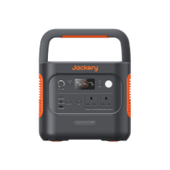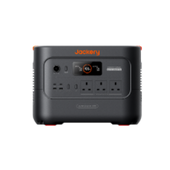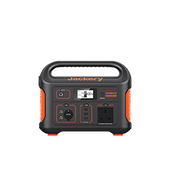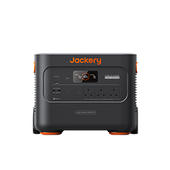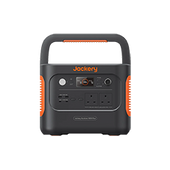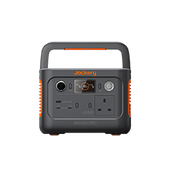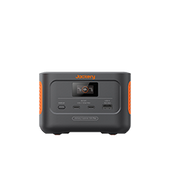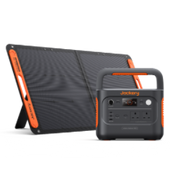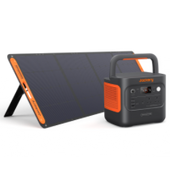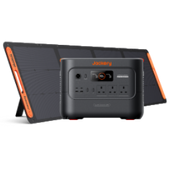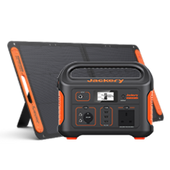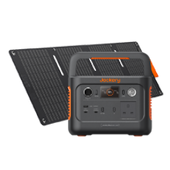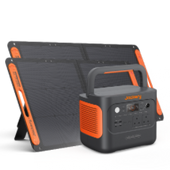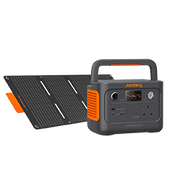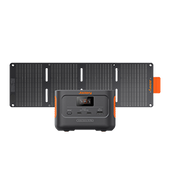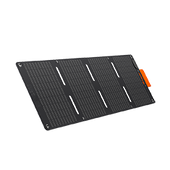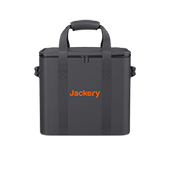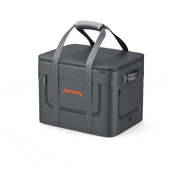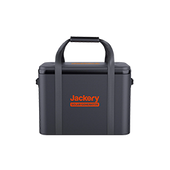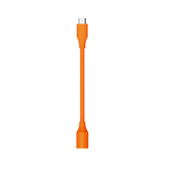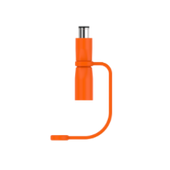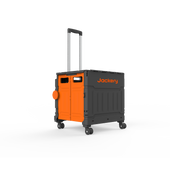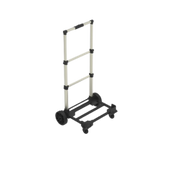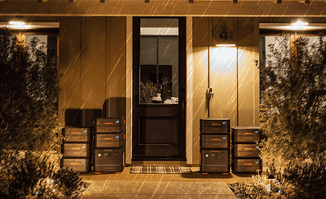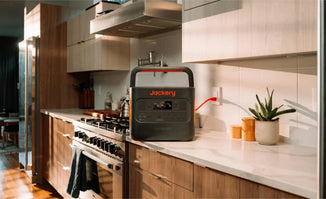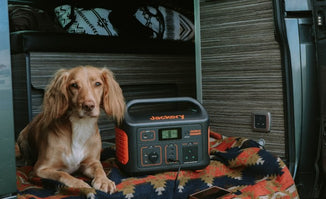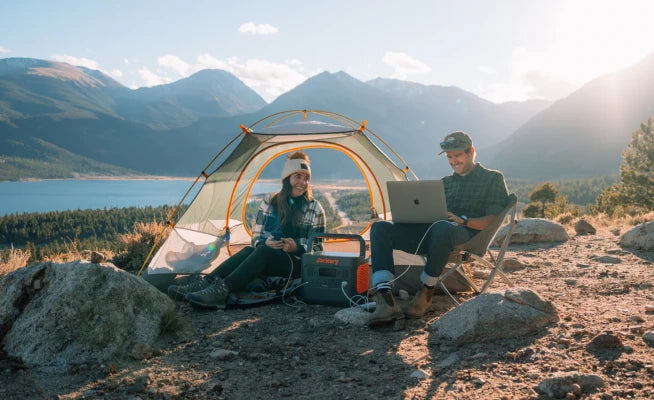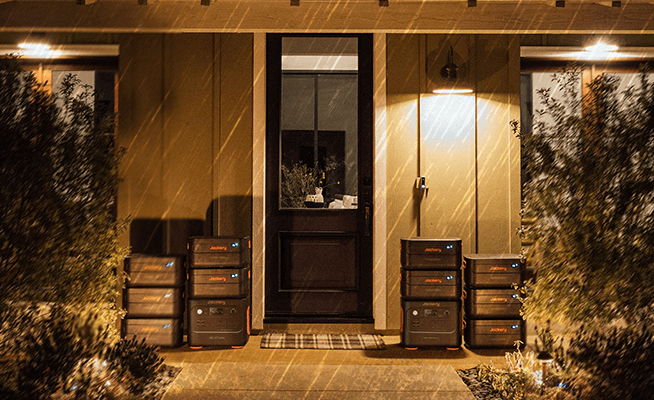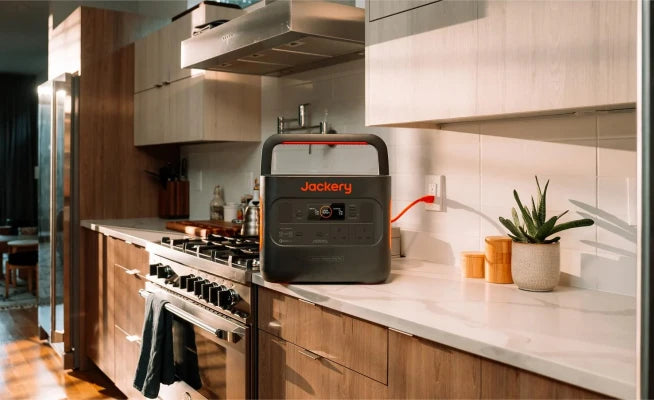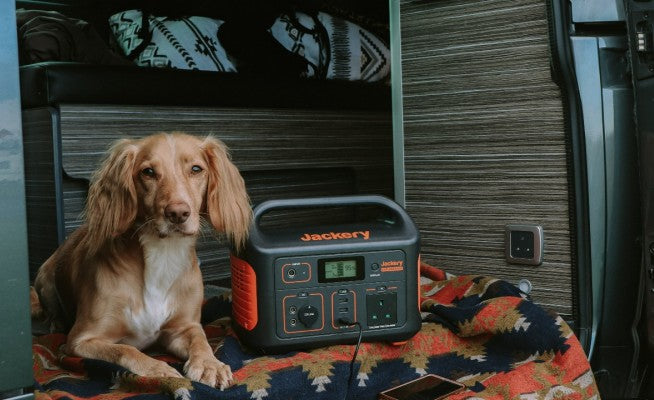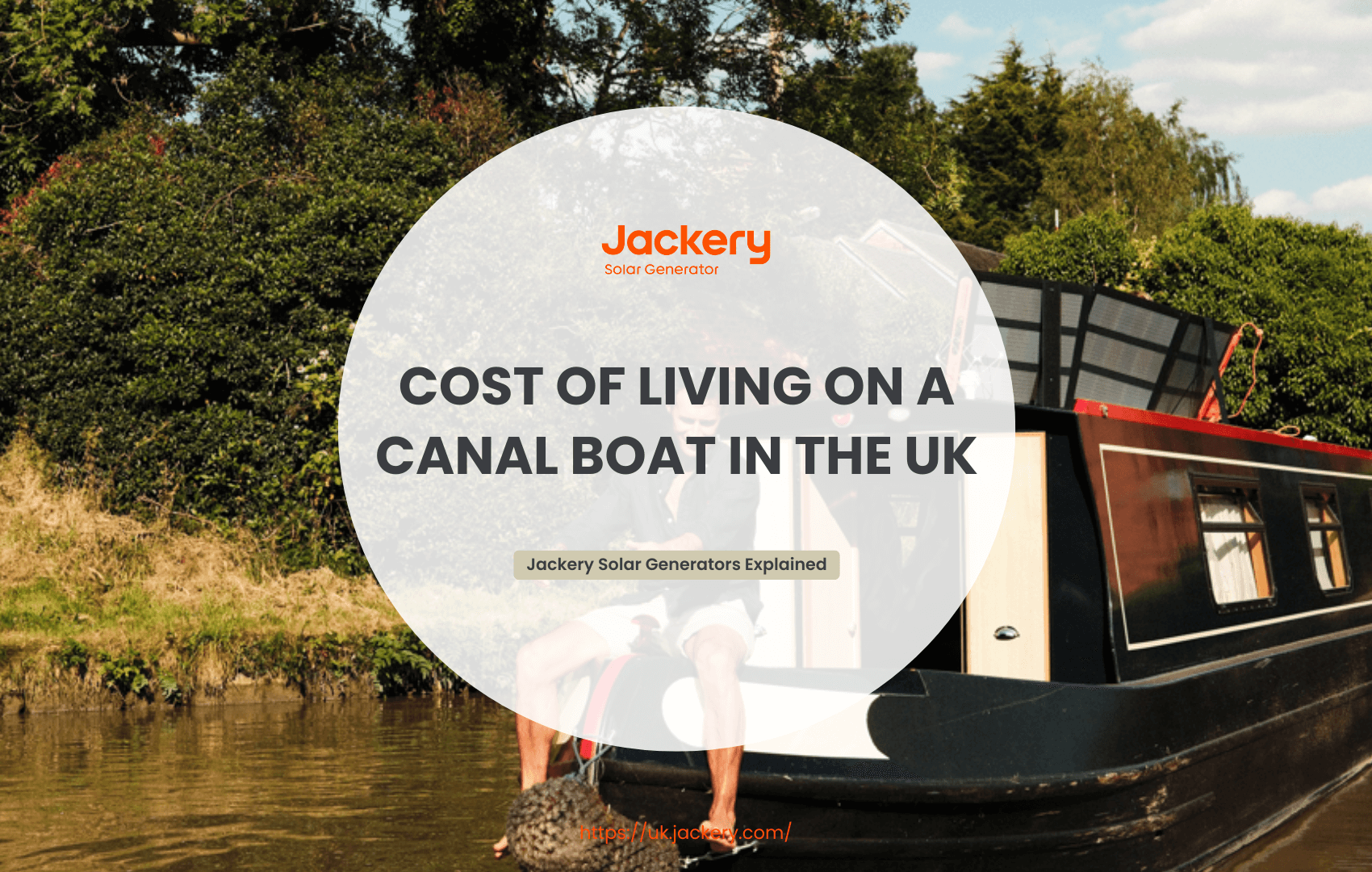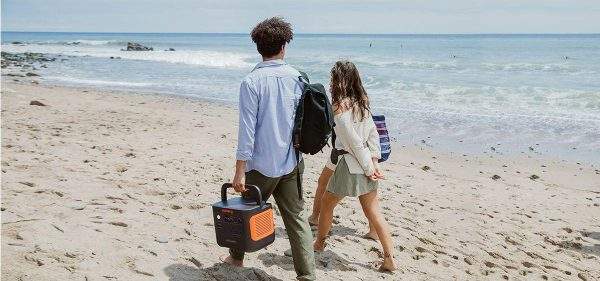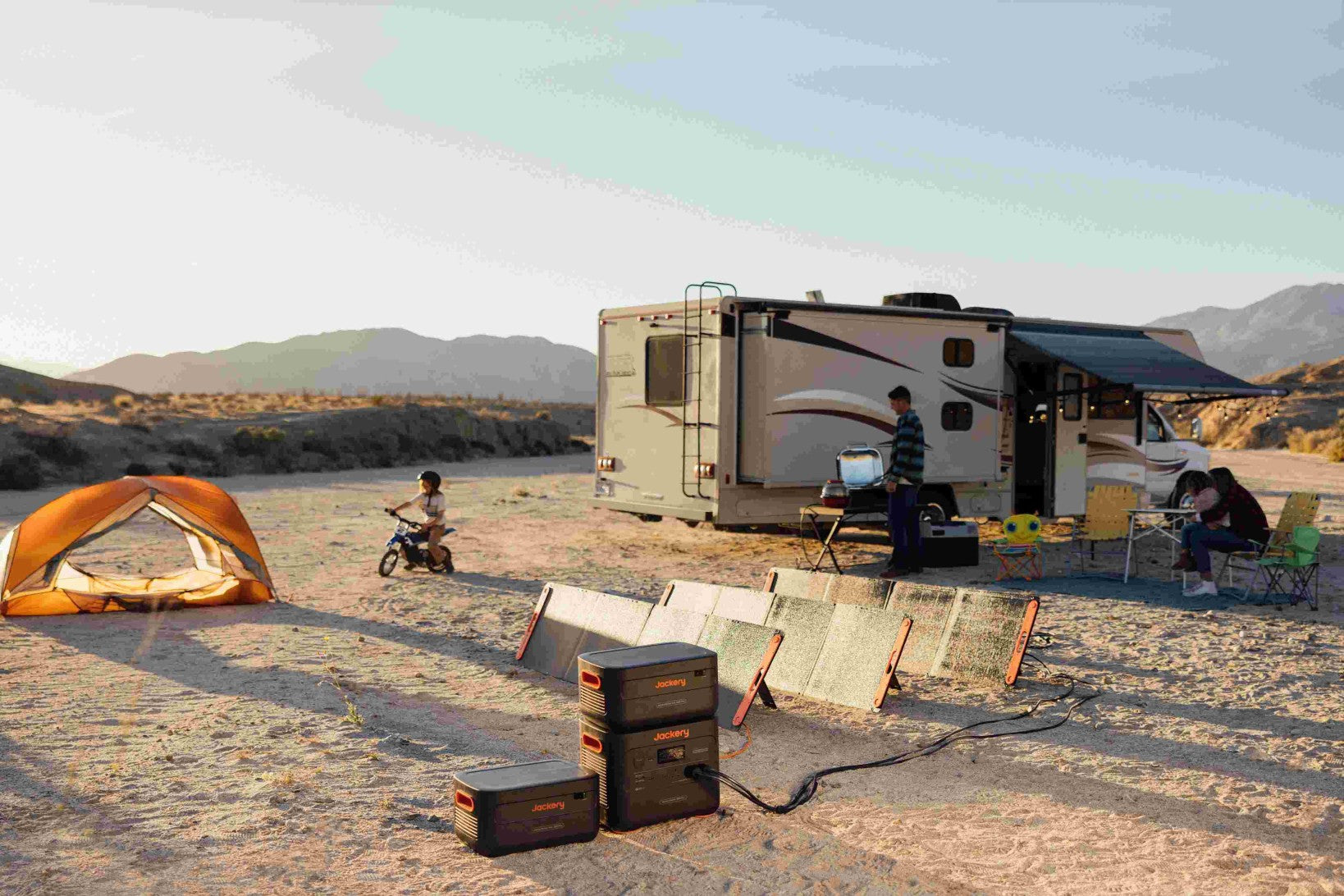Living on a canal boat can be a dream come true for many people, offering not only a unique lifestyle but also the opportunity to explore the UK's intricate waterways. To many people, it sounds like heaven.
However, achieving this dream also comes with a host of costs. From mooring fees to fuel costs to insurance costs, understanding these costs is vital for anyone considering starting canal boat living. This blog will take you through the costs of living on a canal boat in the UK.
Additionally, to reduce your electricity and utility costs, we recommend choosing a Jackery Solar Generator as your portable solar power solution to power appliances with solar energy. The Jackery Portable Power Station can be recharged by Jackery Solar Panels, AC outlets, or carports, making it compatible with various weather conditions.
|
Key Takeaways: |
|
● The annual cost of a typical canal boat is around £8,420 and above. ● The key factors that affect the cost of living on a canal boat include the size of the boat, its condition, the number of people onboard, the living conditions, and the overall quality of life. ● By growing their food, improving the insulation of the boat and using renewable energy, boat owners can significantly reduce their living costs. ● Compared to traditional houses, the cost of living on a canal boat is lower, providing a more economical experience for ordinary people. ● The low cost of living on a canal boat attracts many people, but not all. ● We highly recommend the Jackery Solar Generator 2000 v2 or 2000 Plus as a portable solar power solution for canal boats to save on electricity costs. |
Cost of Living on a Canal Boat
Living on a canal boat has become increasingly popular in the UK in recent years, with many people attracted by its tranquil riverside scenery and low-cost lifestyle. However, the real cost of living on a canal boat is far more complicated than you might think. The following content will introduce you to the costs of the various parts, which include (for reference only):

Insurance Costs
In the UK, narrowboat insurance is required by law when sailing on inland waterway systems. Most people choose the standard third-party liability insurance. Alternatively, some insurance companies may also recommend purchasing comprehensive insurance, the price of which is influenced by factors such as the boat's value, length, width, year of manufacture, construction materials, and type of mooring. On average, the cost of boat insurance is about £150 to £500 per year.
Boat Safety Scheme Certificate Costs
UK maritime regulations require boats to hold a valid Boat Safety Scheme (BSS) Certificate. This cost mainly involves registration, periodic inspections, and certificate fees, with annual expenses ranging from tens to hundreds of pounds. A Boat Safety Scheme Certificate, valid for 4 years, costs approximately £200-300, depending on the size and complexity of the boat.
Boat Licence Fees
In most canals in England and Wales, you need a licence from the CRT (Waterways Ireland/Scottish Canals) to ensure that your boat is legally allowed to sail. The average annual fee for a CRT Boat Licence ranges from £600 to over £1,200.
However, this fee depends on the length, width, type, and method of payment of the boat. For example, a boat with a width exceeding Mach 2.16 will incur a 16% surcharge, and a boat with a width exceeding Mach 3.24 will incur a 32% surcharge. If you want to know exactly how much your canal boat will have to pay, you can use the CRT Licence Fee Calculator to calculate.
Mooring Fees
Mooring fees are charged for mooring at a pier or along a canal, and the fees vary depending on the location and duration of the mooring. The average annual cost of mooring for a residential mooring with a fixed address and a registered postcode is £4,000 to over £10,000, usually including council tax and utility charges. A leisure mooring that is not permitted as a primary or only residence will cost an average of £2,000 to over £5,000 per year, depending on the location and boat size.
Fuel Costs
Canal boats rely on diesel fuel (around £1.10 - £1.50 per litre), and the cost depends on the frequency of sailing. The average monthly cost of diesel for living on a canal boat is around £60. However, cooking, heating and running household appliances when living on a canal boat usually use different fuels. Then, the cost of other solid fuels or gas is around £20 to £50 per month.
Utilities Costs
Some residential moorings already include water and electricity in the fee. However, some residential moorings do not include electricity, which is an additional fee (usually charged per unit) of around £10 to £40 per month. Water costs are typically included in the mooring fee, regardless of whether the mooring is long-term or short-term. The toilet on board (flush toilet or cassette toilet) needs to be emptied regularly (weekly), and each pump-out costs an average of £15 to £25.
Maintenance Costs
Maintenance costs are the most unpredictable but crucial part of the cost of living on a canal boat. Typically, the average annual maintenance (engine, hull inspection) cost of a typical canal boat is £300-600.
Every 2-3 years, the cost of rustproofing and repainting the exterior of the boat ranges from £800 to £1,500, depending on the boat's size and whether a professional is hired for the work. If a canal boat breaks down, the cost of repairs will be much higher than expected, ranging from £500 to £2,000 per year.
Personal Expenses
Besides the basic expenses above, personal expenses for living on a canal boat are similar to those for people living in a traditional house. For example, broadband and TV licenses cost about £40 to £50 per month.
On average, groceries and daily living supplies cost approximately £2,000 to £3,000 per year. It is impossible to install a washing machine on a canal boat, so using the marina's self-service laundry service or a portable washing machine costs about £200 to £400 per year.
|
Cost Type |
Amount (Per Year) |
|
Insurance Costs |
£150-500 |
|
Boat Safety Scheme Certificate Costs |
£50-75 |
|
Boat Licence Fees |
£600-1,200 or more |
|
Mooring Fees |
£2,000-10,000 or more |
|
Fuel Costs |
£960-1,320 |
|
Utilities Costs |
Electricity: £120-480 (if required) Toilet: £780-1,300 |
|
Maintenance Costs |
£1,200-3,100 |
|
Personal Expenses |
£2,680-4,000 |
(Data Source: Lakelandleisureboatsales)
Based on the above-average data, the annual cost of living on a canal boat is approximately £8,420 and above. The above analysis of the cost of living on a canal boat is based on the assumption that you already own a boat in good condition and do not need to spend money to buy or renovate it. If you need to calculate the cost of purchasing a canal boat, it will be a considerable expense. Currently, second-hand narrowboats on the market cost between £30,000 and £80,000, while new widebeams cost as much as £150,000 to more than £250,000.
Factors Affecting the Cost of Living on a Canal Boat
Life on the water may seem romantic, but it is full of economic and practical considerations. The cost of living on a canal boat can vary significantly due to several factors. The following will analyse in depth the key factors that affect the cost of living on a canal boat.

Factor 1: Boat Size
Narrow boats are usually more affordable, suitable for single people or couples, and their maintenance costs are relatively manageable. However, the price of large boats can climb to hundreds of thousands of pounds, and the daily maintenance, cleaning, and docking costs increase in proportion to their size.
Factor 2: Boat Condition
Old boats have a lower initial purchase price, but face continuous maintenance needs, such as leak repairs, engine replacements, and power system upgrades. Modern boats are more expensive, but they are equipped with energy-saving equipment and insulation materials, which can reduce energy consumption and long-term maintenance costs.
Factor 3: Number of People
When living alone or in pairs, fixed expenses such as insurance must be covered in full, but there is high flexibility, allowing you to choose the docking location freely. Living together with multiple people can share fixed costs, but you need to deal with the problems of crowded space and increased resource consumption. For example, a boat accommodating 3-4 people requires a larger water storage capacity and more food purchases, resulting in higher daily living costs.
Factor 4: Living Conditions (Full-Time vs. Casual)
Full-time boaters need to use their boats as long-term residences, facing continuous high maintenance needs, such as a stable power supply, regular changes of moorings or expensive residential moorings. The costs of casual boaters who only live on their boats on weekends or holidays are relatively lower, mainly focusing on short-term docking and occasional maintenance.
Factor 5: Quality of Life
If you want to live a high-quality life on a canal boat, you will incur enormous and limitless additional costs. For example, the initial cost of installing smart home systems, upgrading cooking equipment, and building custom-made insulated cabins might approach tens of thousands of pounds. The monthly expense of employing professionals to maintain the boat's beauty and mechanical components might be hundreds of pounds.
How to Reduce the Cost of Living on a Canal Boat?
For most ordinary people, the cost of living on a canal boat is also a big challenge. Therefore, it is essential to explore various ways to save money. By adopting sustainable energy, optimising resource management, and self-reliance, boat owners can significantly reduce their living costs.

Tip 1: Collect Firewood
Seize every opportunity to gather firewood as a low-cost fuel supplement. For example, if you go for a walk off the boat, pick up dead branches or pruned firewood from the public areas along the canal, taking care not to harm the natural vegetation.
Tip 2: Grow Your Food
Growing your food not only reduces procurement costs but also allows you to eat organic food. Utilise the vertical space in the cabin to install multi-layer planting racks for growing small crops, such as radishes and spinach. Even simpler, you can also learn from the method of growing potted plants to grow some vegetables. Then exchange your agricultural products and surplus supplies with other boaters.
Tip 3: Do As Much Repair As Possible Yourself
Doing as many fundamental repairs as possible yourself can help you save money on labour. Basic repair skills include preventing hull rust, unblocking pipes, and fixing electrical problems. You'll also need to purchase some basic repair tools and equipment, such as multi-purpose screwdrivers, welding tools, and sealants.
Tip 4: Insulate Your Boat
As with typical residences, insufficient insulation allows heat to escape from the boat, leading to higher energy consumption. Pasting foam insulation panels to the cabin's walls and ceilings can significantly cut cooling and heating energy usage. If your budget allows, consider replacing the windows with double-glazed glass to reduce heat loss and improve energy efficiency.
Tip 5: Use Renewable Energy
If conditions allow, solar photovoltaic panels can be put on the boat's roof or deck to generate electricity from sunlight. Small wind turbines can create electricity by capturing wind energy in open river sections. When combined with a lithium battery energy storage system, it can provide electricity even on cloudy or windless days. The simplest way is to use an environmentally friendly and noiseless solar generator (such as the Jackery Solar Generator 2000 v2 or 2000 Plus) instead of a traditional generator.

Tip 6: Rental Boats and Moorings
If you don't use your boat year-round, consider renting it out to generate extra income. Especially during the summer, holidays and other peak tourist seasons, renting out a boat as a leisure resort can generate higher returns. If you have a fixed mooring, you can rent it out to other boat owners in periods for a daily fee.
Jackery Solar Generators for Living on a Canal Boat
Canal boats frequently move between moorings, many of which lack shore power hookups. This makes reliance on the boat's engine alternator or a separate generator essential for charging batteries. Running the boat's engine for extended periods solely to charge is noisy, produces fumes, and consumes expensive diesel. Traditional generators are also bulky, loud, and require fuel. Many canal boats still use lead-acid leisure batteries, which have limited cycles and don't tolerate deep discharge well.
Instead of a noisy, polluting diesel engine or generator, a Jackery Portable Power Station powered by Jackery Solar Panels operates silently and produces no emissions. This is highly valued by other boaters and residents along the canal, as it avoids noise complaints, especially during quiet hours (often from 8 PM to 8 AM).
You can run essential appliances, charge devices, and maintain comfort without needing to constantly run your engine or seek shore power with Jackery Solar Generators. Even if your boat has an existing 12V system and an engine charging system, a Jackery can act as a powerful supplement. It can take the strain off your primary leisure batteries, extending their lifespan, and provide 240V AC power for higher-draw appliances without needing a large, expensive inverter setup for your whole boat.
Jackery Solar Generator 2000 v2
The Jackery Solar Generator 2000 v2 (the combo of Jackery Explorer 2000 v2 portable power station with Jackery SolarSaga 200W solar panel) is a strong contender for canal boat living in the UK, offering a compelling blend of features for off-grid power.

2042Wh Capacity: This provides a good amount of stored energy, capable of running essential canal boat appliances for extended periods. For example, it can power a 90W fridge for approximately 21 hours, LED cabin lights for 260 hours, or an 850W electric kettle 16 times.
2200W Continuous Output (4400W Surge Peak): This allows you to run most common household appliances, including microwaves (around 1160W for 1.5 hours), coffee makers, toasters, and even some power tools, without overloading the system. It typically includes UK 230V~13A AC sockets, USB-C (100W for laptops), and USB-A ports, allowing you to charge and power various devices simultaneously.
Lightweight and Compact: With a weight of around 17.5 kg (38.6 lbs) and a foldable handle, it's designed to be relatively easy to move around your boat or transport. Its compact dimensions (13.2 × 10.4 × 11.5 in) make it suitable for smaller spaces.
Whisper-Quiet (under 30dB in quiet charging mode): This is a significant advantage for canal boat living, as excessive noise can be disruptive in a small living space and to your neighbours on the canal.
UPS (Uninterruptible Power Supply) Functionality: With a quick transfer time of ≤ 20 ms, it can seamlessly switch to battery power during outages, protecting sensitive electronics such as laptops and Wi-Fi routers. It allows you to monitor and manage power usage via the Jackery App conveniently.
|
Jackery Solar Generator 2000 v2 Running Time |
|
|
Coffee Maker (1120W) |
1.8H |
|
Electric Kettle (800W) |
10 Times |
|
Portable Fridge (90W) |
15H |
|
Light (5W) |
155H |
|
Projector (100W) |
15H |
(*The working hours are only for reference; the actual working hours depend on your usage.)
Jackery Solar Generator 2000 Plus
The Jackery Solar Generator 2000 Plus is an excellent choice for canal boat living in the UK, as it combines a Jackery Explorer 2000 Plus portable power station with Jackery SolarSaga 200W solar panels, making it particularly well-suited for this unique lifestyle.

Expandable Capacity: With 2042.8Wh capacity, it is a solid starting point for powering typical boat appliances (lights, phone/laptop charging, water pump, small TV, fan). With an expandable capacity of up to 12kWh, the 2000 Plus truly shines for canal boat living. Run with the base unit in summer when solar is abundant, and add an extra battery for winter when solar input is minimal and engine charging is less frequent.
High Power Output for Essential Appliances: 3000W continuous output (6000W surge) is a very robust output, capable of running almost any domestic appliance you'd typically find on a canal boat, such as a kettle, toaster, microwave, power tools, and more.
Advanced LiFePO4 Battery: With over 4000 cycles to 70% capacity, its industry-leading lifespan (equivalent to approximately 10 years of daily use) is incredibly valuable for constant usage in off-grid canal boat life. You're investing in a system that will last. LiFePO4 chemistry is inherently more stable and safer than other lithium-ion types, which is a significant consideration in the confined space of a boat.
Fast Solar Recharging: It can be fully charged in as little as 2.4 hours with 6* SolarSaga 200W panels. Even with fewer panels, the high input capacity ensures efficient charging on sunny days. Alternatively, you can recharge the Explorer 2000 Plus via an AC outlet for 2 hours.
Silent Operation: Unlike noisy diesel generators or running your boat's engine for hours, the Jackery Solar Generator is virtually silent. This is a massive benefit for maintaining peace on the canals and adhering to noise regulations, especially when moored near other boats or residential areas.
|
Jackery Solar Generator 2000 Plus Running Time |
|
|
Coffee Maker (550W) |
2.8H |
|
TV (60W) |
23H |
|
Water Pump (60W) |
20H |
|
Portable AC (1150W) |
1.9H |
|
Refrigerator (520W) |
3.1H |
(*The working hours are only for reference; the actual working hours depend on your usage.)
Is the Cost of Living on a Canal Boat Low Compared to a House?
In recent years, as house prices and rents in the UK continue to rise, an increasing number of young people and working individuals are choosing to live on canal boats. However, is the real cost of living on canal boats lower than that of ordinary houses? In the following content, we will analyse the answer to this question from multiple aspects.
Initial Purchase Cost
Compared with properties that cost hundreds of thousands or even millions of pounds, a narrowboat or widebeam that costs from tens of thousands to hundreds of thousands of pounds may not be a big deal. According to Aquavista, the average cost of buying an apartment in London is about £443,073, while the average price of purchasing a narrowboat is about £57,000.
The average monthly cost of renting a narrowboat in London is about £650, while the average monthly rent for a one-bedroom apartment in London is as high as £1,550. Therefore, from the perspective of initial purchase cost, canal boats are indeed more attractive.
Daily Expenses
According to Numbeo, the average monthly bill (including electricity, heating, cooling, and water bills) for a London apartment is estimated to be approximately £253. Due to reduced energy consumption, the average monthly bill for a narrowboat is usually about £75. Although boaters can address their water and electricity needs through the use of solar panels, water filtration systems, and other solutions, the initial investment is high, and the subsequent maintenance is complex. Therefore, even if the daily expenses of living on a canal boat are low, its maintenance costs are difficult to predict.
Other Expenses
Buying or renting a house in London requires a series of fees, including agency fees, house measurement fees and potential maintenance costs. Living on a canal boat will also incur additional expenses, such as mooring fees, insurance premiums, and fuel costs. Whether living in an ordinary house or a canal boat, these expenses are difficult to predict.
Below is the average monthly cost of living in a traditional house in different parts of the UK and the cost you can save if you live on a canal boat.

(Data Source: Insure4boats)
Note*: Due to different house prices and municipal tax levels, the cost of living in traditional housing will naturally vary from region to region. Compared to conventional houses, the cost of living on a canal boat is lower, which may provide a more economical experience for ordinary people.
Is Low Cost a Reason for People to Choose Living on a Canal Boat?
For some UK residents, the low cost of canal boat life is a significant draw. In many parts of the UK, particularly London and the southeast, the down payment and mortgage expenses for purchasing a standard home are too expensive.
In comparison, the cost of a second-hand narrowboat in good condition may be substantially less than the down payment on a flat or house. As a result, living aboard a canal boat becomes an option for dealing with the pressures of high housing costs.
However, low cost is not the whole picture of living on a canal boat. Although the initial cost may be lower than that of a house, the subsequent maintenance and operating expenses of a canal boat are not. For example, long-term mooring at a fixed dock incurs monthly or annual fees ranging from £4,000 to £10,000 per year. To live legally and comfortably on a canal boat, you must also pay for insurance, licence fees, gasoline and potentially costly repairs.
Although the low cost of living on a canal boat appeals to many, it is not the only reason. For many people, the most appealing aspect of living on a canal boat is the opportunity to travel the UK's huge canal network, anchoring in various locations and seeing the ever-changing scenery and towns. A traditional home cannot offer this level of flexibility and mobility.
FAQs
The following are the frequently asked questions about the cost of living on a canal boat:
1. How much does it cost to live on a canal boat per year?
Based on owning a canal boat in good condition, the average cost of living on a canal boat is around £8,420 and up.
2. Is living on a canal boat cheaper than living in a house?
For most people, the answer is yes. It is usually cheaper to buy or rent a boat than to buy or rent a house. For example, you can rent a nice canal boat for a few hundred pounds. However, living on a canal boat often comes with expensive mooring fees, waterway permits, insurance and ongoing maintenance costs. However, compared to owning a house, living on a canal boat is still an affordable option.
3. Do you pay council tax if you live on a canal boat?
Whether you need to pay council tax for living on a canal boat depends on your specific circumstances. If you live on a canal boat with a residential mooring, you need to pay council tax. But if you are a continuous boat (without a fixed mooring), you are usually exempt from paying council tax.
4. Can you not buy insurance for your canal boat?
No. In the UK, boat insurance is usually required to use inland waterways such as canals and rivers. You will need at least third-party liability insurance to obtain a boat licence from the Canal and River Trust (CRT). Many marinas and ports also require proof of valid insurance before granting permission to berth.
Final Thoughts
In summary, the low cost of living on a canal boat has attracted many people. Compared to traditional houses, the initial expenditure and some fixed living costs on a canal boat may be lower. However, its overall cost is often underestimated and involves numerous hidden expenses, as well as significant labour and time investments. People considering a lifestyle change can carefully consider it after reading this blog and understanding the cost of living on a canal boat.


